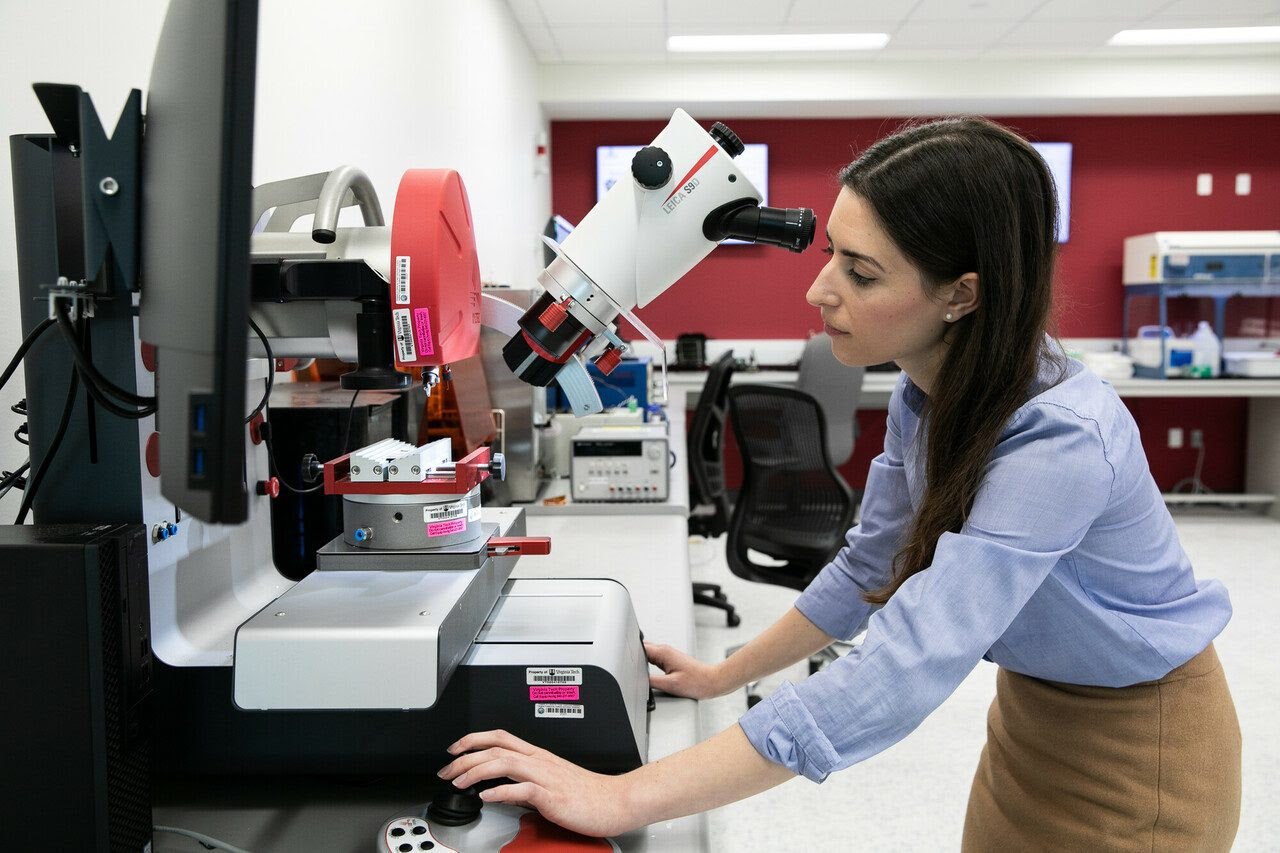
Christina DiMarino is an assistant professor in the Bradley Department of Electrical and Computer Engineering at Virginia Tech.
Women make up only 35% of the workforce in science, technology, engineering and math (STEM) – the greatest disparities occurring in engineering and computer sciences. Christina DiMarino, an engineering professor at Virginia Tech, said now is the time to flip the script and explained why it is so important that education for women and underrepresented groups about STEM fields starts early in life.
The problem: gender imbalance
DiMarino says the absence of women in the field is something she sees regularly, but also views it as a great opportunity for growing women leaders in STEM for the future.
“STEM career environments that have been cultivated by men over generations have struggled to adapt to be more inclusive for women and other underrepresented individuals,” DiMarino said. “There have been strong pushes for increasing diversity in STEM, but cultivating that representative community is going to take time.”
The importance of diverse representation in STEM
“Engineers aim to address critical problems facing humanity and if the engineers themselves are not diverse, then it can be difficult for them to identify problems that other groups may face and come up with solutions that are suitable for these other groups,” DiMarino said. “Having more diversity among engineers brings broader perspectives and experiences, and can result in more effective solutions.”
What can be done to increase the number of women in STEM
DiMarino said it is important that women are provided equitable opportunities and resources as their peers in an academic setting as well as the engineering workplace.
“Creating inclusive, welcoming, and supportive environments are critical to increasing and retaining the number of women in STEM fields. This empowers them to do great things,” said DiMarino. “Mentors are helpful, but alone are not enough. Having people in positions of influence that will advocate for women to be considered for high-visibility opportunities, promotions, or assignments is key in career advancement.”
DiMarino said the best place to start is with the youngest generations. “Introducing STEM fields and topics at a young age is critical to helping students better understand the vast opportunities,” DiMarino said. “I also think that sharing the great accomplishments of diverse historical and present-day figures in STEM is important because it shows that there are people that look like them and may come from similar backgrounds.”
Margaret Ashburn for Virginia Tech




